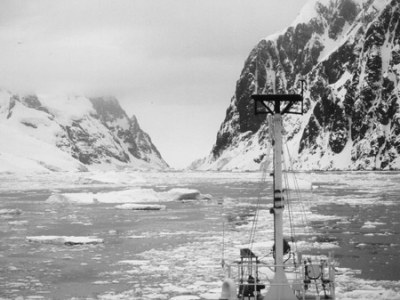
| Glasgow Digital Library | Voyage of the Scotia | BRUCE | PEOPLE | SHIP | ANTARCTIC | INDEX |
|---|
The early explorers' diet when in the field was based on pemmican (dried meat with plenty of fat), biscuits, butter and cheese, sugar with seal and penguin meat when available. Amundsen on his trip to the South Pole shared dog meat with the dogs.
Today the diet is very similar to that at home; a well-balanced diet. In the Antarctic, due to the cold, when any physical work is done calories are quickly burnt up by the body. Carbohydrates and fats are very important. People working in the south tend to be very hungry when meal time arrives, and between meals they have various snacks, especially chocolate. They have been known to eat raw butter to replace lost fats.
All the rubbish accumulated on bases in the Antarctic must be removed, and only biodegradable food waste and sewage is returned to the sea (or in the case of Halley to ice pits). All other material - waste oil, cans, wrapping of foodstuffs, old clothes, and any material of no further use - must be removed. Most of this goes to a landfill site in the Falkland Islands. Any bases in the Antarctic which are shut down must be removed (even for small bases this can cost millions of pounds). A few bases such as Scott's and Shackleton's huts have been kept as historic monuments.

The James Clark Ross passing through the Lemar channel on the way to Rothera
| Glasgow Digital Library | Voyage of the Scotia | BRUCE | PEOPLE | SHIP | ANTARCTIC | INDEX |
|---|